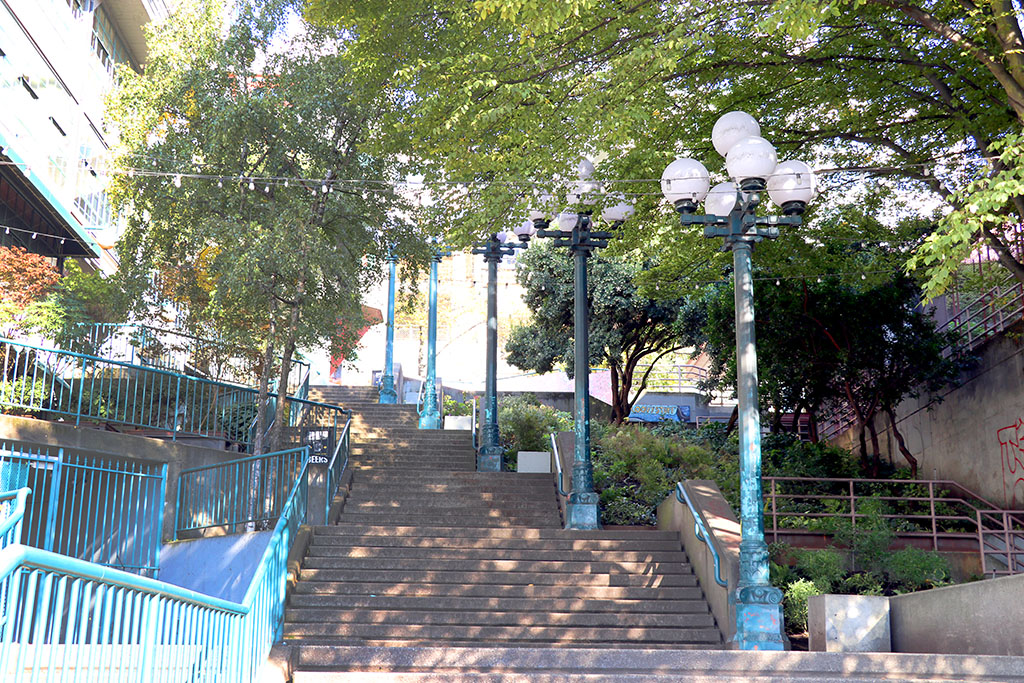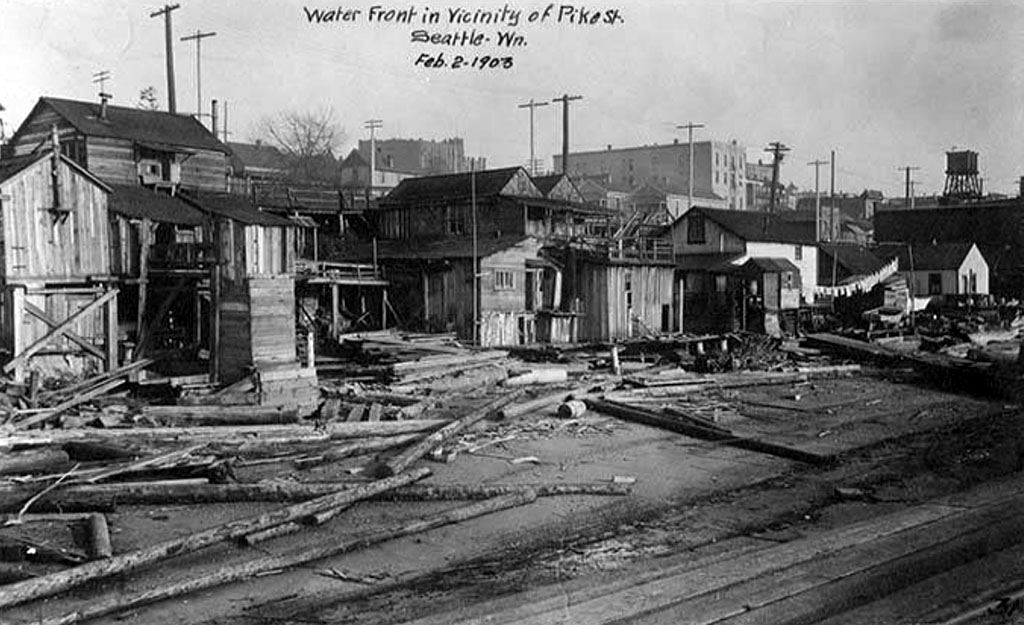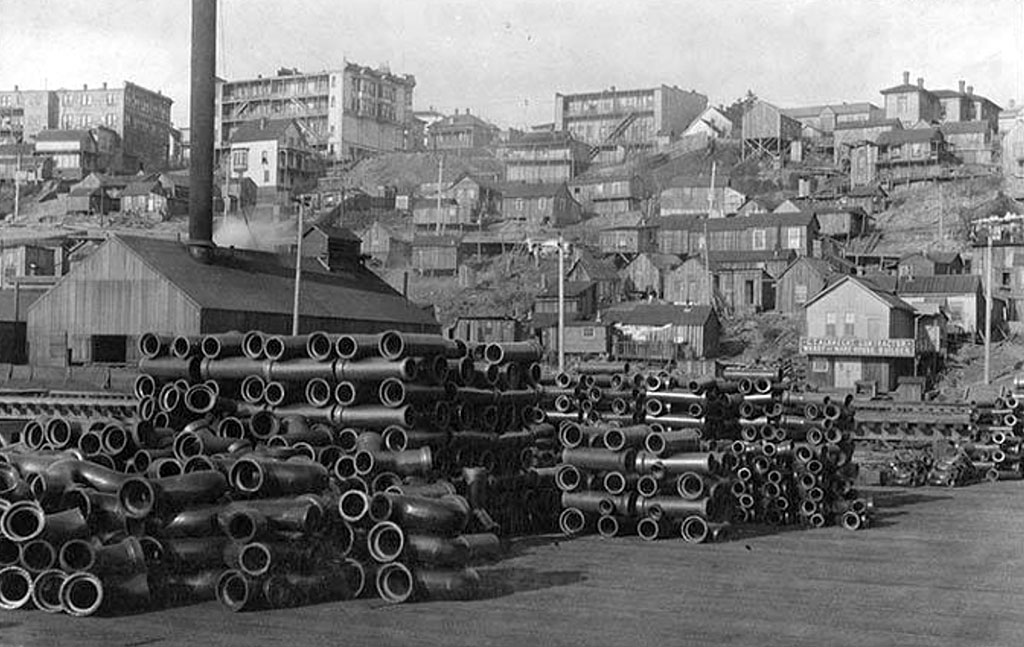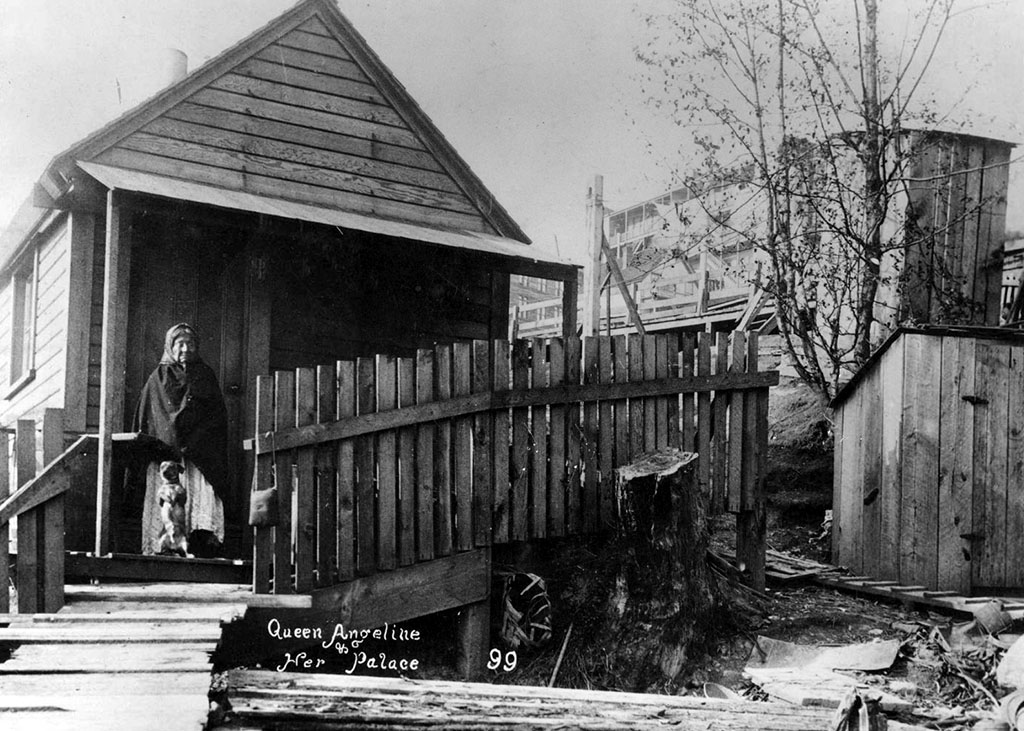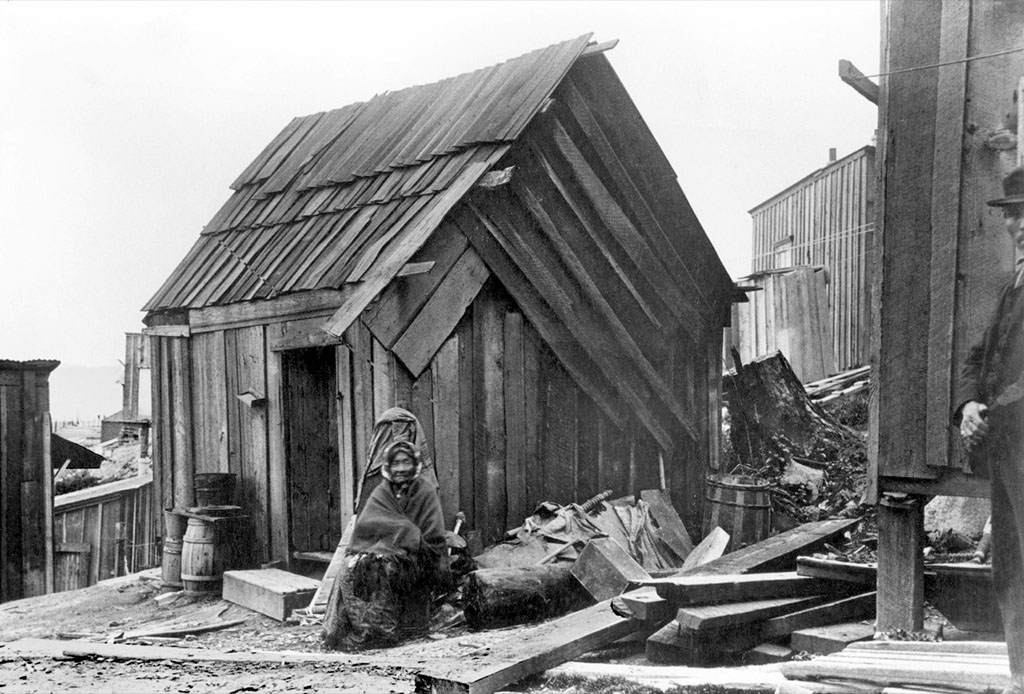-
Kikisoblu
Alaskan Way and Pike Street Hillclimb
Pike Street Hillclimb and Alaskan Way
As shipping and industry grew along the shoreline in the 1890s, it remained home to a small community on the slope below what would become Belltown. Maps of the waterfront from the 1890s show a small enclave of houses north of Pike Street along what was then called Water Street. These homes were modest cabins perched on the hillside. In an era of haphazard development, people who were marginalized, including Indigenous people and those at the bottom rungs economically, often found places to “tuck in” to the city, including here on the hillside or on the south end of town where shacks filled in the edges of the tideflats, either on pilings or on floats.
The 1880 census recorded four Indigenous households on the hillside including one well-known resident, Kikisoblu, known more commonly to non-Natives as Princess Angeline. She gained attention as the daughter of Seattle’s namesake, Si’ahl, a leader of the Duwamish and Suquamish tribes who helped early non-Native settlers get established on the shores of Elliott Bay and in the Duwamish River Valley. She also drew attention for remaining in the city when most of her fellow Duwamish had been forced out of Seattle through the treaty process, legislation, and violence, including the burning of the longhouses at the last remaining Duwamish River village in the city, t̓uʔəlaltxʷ (Herring’s House), in 1893.
Although Kikisoblu was one of the most well-known Native people living in Seattle, she was hardly the only one. In addition to the families living near her, members of the Duwamish tribe and other Coast Salish tribes in the region, such as the Muckleshoot Indian Tribe, the Suquamish Tribe, the Tulalip Tribes, and the Snoqualmie Tribe, lived in the area and worked in the sawmills, on fishing boats, and at other jobs. They and other Indigenous people from around Puget Sound, and from British Columbia and Alaska also passed through the city on their way to working in the hops fields in King and Pierce counties. The waterfront remains a significant place for Native people today to gather together and fish. Near the mouth of the Duwamish River, the Duwamish Tribe’s Longhouse is adjacent to the recently renamed t̓uʔəlaltxʷ Village Park and Shoreline Habitat in honor of the village at that site.
